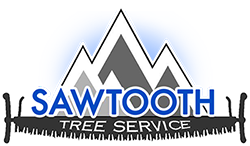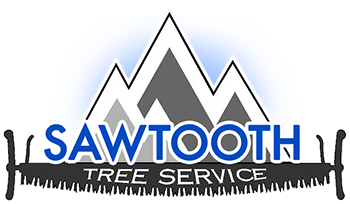Sawtooth Tree Service Blog

Severe storms can put intense strain on the trees around your home. While many are strong enough to withstand heavy winds and rain, others may be structurally compromised without you realizing it. A fallen tree can cause major property damage, block driveways, or create dangerous situations for anyone nearby. The good news is that trees often show warning signs before they fail. By recognizing these red flags early, you can address potential hazards before the next storm rolls in. At Sawtooth Tree Service, our local ISA-certified arborists provide expert hazardous tree removal in the greater Boise area. Here are four signs that a tree on your property may be at higher risk of crashing down during severe weather. A Noticeable Lean or Sudden Change in Angle A slight lean doesn’t necessarily mean trouble, but a tree that suddenly begins leaning or appears to be leaning more than before is a major cause for concern. This often means the root system is no longer stable or the soil around the tree has shifted. Cracking soil or exposed roots on one side of the trunk commonly signals that the tree is losing its footing. In storm conditions, this imbalance can easily cause the tree to topple. Damaged or Exposed Roots Because roots anchor a tree into the ground, any damage to them can compromise stability. If you notice large roots lifting above the soil or severe erosion around the base, the root system may be weakened. Trees with compromised roots are among the most likely to fall during high winds. Cracks or Cavities in the Trunk Structural weakness in the trunk is a serious issue. Cracks, hollow areas, or deep cavities can indicate serious internal decay. Even if the tree is still producing leaves, a weakened trunk is far more likely to snap under storm pressure. These issues often worsen silently over time, making early detection crucial. Signs of Decay/Fungal Growth Fungus on the trunk and soft or crumbly wood are potential signs of internal decay. A tree may appear solid from the outside but be severely weakened on the inside. Decayed trees often fail suddenly, especially when exposed to strong winds and storm stresses. Tree Removal in Boise, ID When you need an arborist in Boise and the surrounding area, contact Sawtooth Tree Service at (208) 268-8199 . We provide expert residential and commercial tree care in the greater Boise area. Feel free to give us a call to request a free arborist estimate in Boise, ID!
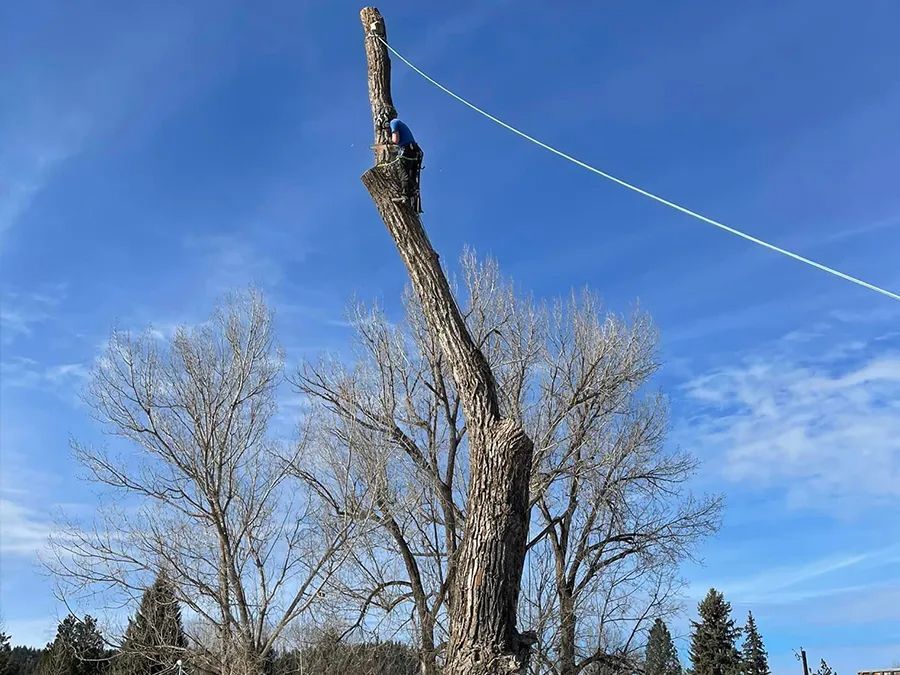
When a tree becomes hazardous, diseased, or grows too close to your home, removal may be the best solution. However, tree removal is not a simple weekend DIY project—it’s a complex and potentially dangerous task that demands professional knowledge and precision. Hiring an ISA-certified arborist enables the job to be completed safely, efficiently, and with care for your property and surrounding landscape. At Sawtooth Tree Service, our local ISA-certified arborists provide expert tree removal in the greater Boise area. Here are four reasons why relying on certified arborists for tree removal is the smartest and safest choice. Certified Arborists Prioritize Safety Tree removal involves significant risks, especially when dealing with tall, heavy, or decaying trees near structures or power lines. ISA-certified arborists are trained to assess safety hazards before starting work and use skilled techniques and proper equipment to eliminate risks. Their experience allows them to remove trees in controlled sections, minimizing the chance of injury or property damage. Attempting to remove a tree without proper training or tools can easily result in accidents that certified professionals are equipped to prevent. They Have Expert Knowledge of Tree Health Certified arborists are trained in the science of tree care, giving them a deep understanding of how to assess the health, structure, and stability of trees. Before removing a tree, they evaluate whether it can be safely pruned or treated instead. If removal is necessary, their understanding of root systems and canopy balance ensures that the process is done in a way that won’t harm nearby vegetation. This expertise helps protect your landscape and maintain its overall health. Proper Equipment and Techniques Ensure Efficiency Thorough tree removal requires specialized tools—particular chainsaws, rigging systems, and stump grinders—that most homeowners don’t have or know how to safely operate. ISA-certified arborists have access to professional-grade equipment and know exactly how to use it to remove trees efficiently and cleanly. They Can Provide Complete Cleanup and Future Recommendations After a tree is removed, the job isn’t finished. Certified arborists handle stump grinding, debris cleanup, and disposal, leaving your yard safe and tidy. They can also recommend replacement trees or preventive measures to keep remaining ones healthy and strong. By trusting ISA-certified professionals, you gain peace of mind knowing the work is done thoroughly, responsibly, and with the future of your landscape in mind. Tree Removal in Boise, ID When you need an arborist in Boise and the surrounding area, contact Sawtooth Tree Service at (208) 268-8199 . We provide expert residential and commercial tree care in the greater Boise area. Feel free to give us a call to arrange a free arborist estimate in Boise, ID!
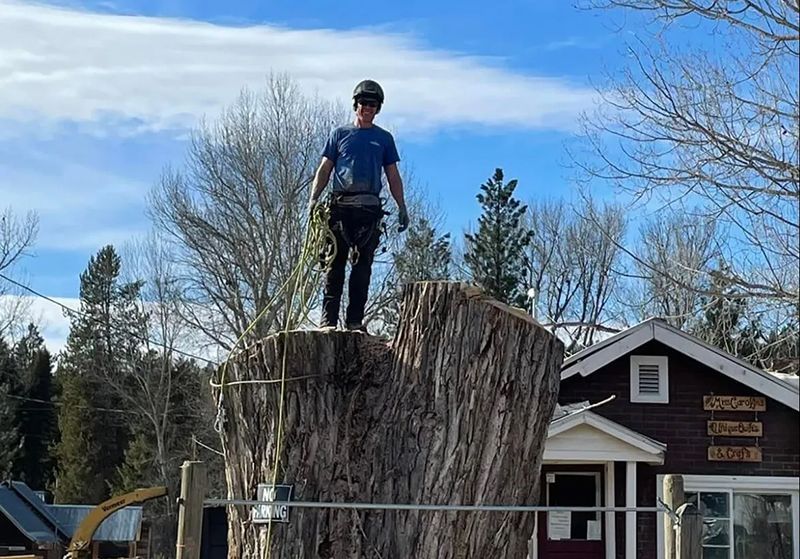
When a tree is cut down, many property owners are left with the question of what to do about the stump. While it may not seem urgent, leaving a stump in place can create safety issues, attract unwanted pests, and limit how you use your yard. Professional stump removal is the most effective way to eliminate these problems. At Sawtooth Tree Service, we provide expert stump removal in the greater Boise area. Here are four ways that stump removal can enhance your property. Improved Safety for Your Yard One of the most important benefits of professional stump removal is increased safety. Tree stumps can be hidden hazards, especially in areas where children play. They can also pose a tripping risk to visitors or create obstacles for lawn care equipment. Professionals ensure the stump is fully removed below ground level, reducing the chance of accidents and leaving you with a safer, more navigable landscape. Protection Against Pest Problems Old stumps are notorious for attracting insects such as termites, carpenter ants, and beetles. These pests often nest in decaying wood and can eventually spread to healthy trees or even to your home. Professional stump removal eliminates this breeding ground, helping protect your property from costly infestations. Restored Curb Appeal A lingering stump can make even the most well-kept yard look neglected. Over time, sprouts may grow from the stump, creating an unattractive cluster of small branches. Professional stump removal restores a more polished appearance to your landscape, boosting your curb appeal. And for homeowners considering selling, this improvement can also make the property more attractive to potential buyers. More Usable Space Stumps often take up valuable space that could otherwise be used for new landscaping or outdoor projects. Whether you want to install a patio or add a garden bed, removing the stump creates a blank slate for future improvements. Professional stump removal can allow you to more fully utilize your yard without having to work around obstacles. Professional Stump Removal in Boise, ID For stump grinding and removal in Boise and the surrounding area, contact Sawtooth Tree Service at (208) 268-8199 . Our local arborists provide expert residential and commercial tree services. Feel free to give us a call to arrange a free arborist estimate in Boise!
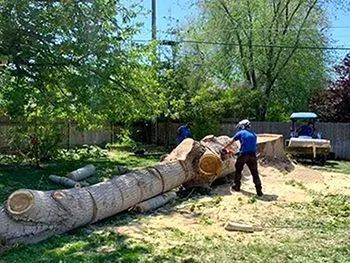
At Sawtooth Tree Service, our crew of local ISA-certified arborists takes great pride in providing expert tree care in the greater Boise area. No matter the scale of the job—from big tree removal to light trimming—our team will work efficiently to get the job done correctly and in a timely manner. And we appreciate it when our clients take the time to offer feedback about their experiences with us. Here’s a look at some of our recent reviews. “I first had Dave and his crew from Sawtooth come to my house a few years back to trim some trees and remove another—they showed up and went after like a group of worker bees, everyone had a job and knew what they were doing. Very professional and picked up after themselves. Fast forward to this year. I called them back to remove a tree in my backyard—the crew was friendly, personable and fun to talk to. They had my tree down and gone in less than 2 hours, ground the stump and even took a pile of branches from another tree at no extra cost. They're very affordable and I highly recommend this company. Thanks guys!” — Cody V. “Sawtooth did a GREAT job!! Took out a giant old elm tree and removed limbs. Service & response was awesome and the price was reasonable. I would definitely hire these guys again!!” — Karen M. “Once again Dave and his crew at sawtooth were great! We have had them back to help with trimming up a spruce and maple tree that was long over due for haircuts- they look so much better now! We will continue to use them when we need and always recommend them for all your tree service needs!” — Rebekah F. “Dave and his team at Sawtooth did a great job as usual. I keep coming back because you can always count on the guys to be professional and nice. Cleanup is always very tidy.” — Eddie B. “Great service and better pricing than others we called. Their team was respectful of the property and made everyone feel comfortable. The trees look amazing!” — Andrew R. “Amazing tree service. I have had them take down 3 trees over the years and they have always been very pleasant to work with. I highly recommend this service if you’re looking. The crew have always been nice and knowledgeable about the trees and what they are doing.” — Angelia W. Arborist in Boise, ID When you need an ISA-certified arborist in Boise and the surrounding area, contact Sawtooth Tree Service at (208) 268-8199 . Feel free to give us a call to request a free arborist estimate in Boise!
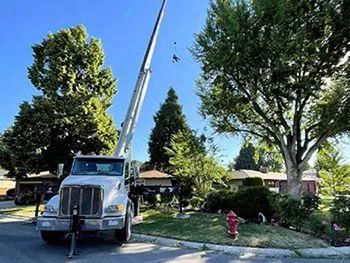
When preparing to sell your home, first impressions matter. Curb appeal can significantly influence a potential buyer’s perception before they even step inside. Well-maintained trees and landscaping can elevate the appearance of your property, making it feel more inviting and valuable. Hiring a certified arborist is a smart investment in this process. Their expertise can transform an average yard into a standout feature that attracts more attention and potentially leads to a faster and more profitable sale. At Sawtooth Tree Service, our ISA-certified arborists can do tree work that will help to beautify your property before putting it on the market. Here are four ways a certified arborist can enhance your property’s curb appeal before listing your home. Pruning and Shaping for Visual Impact A certified arborist knows how to skillfully prune and shape trees to highlight their natural beauty while ensuring their health. By removing overgrown and dead branches, an arborist creates a cleaner appearance that enhances the yard. Proper pruning also improves sunlight penetration, which can benefit the surrounding lawn and flower beds. A well-shaped tree can provide symmetry and balance to your landscape. Removing Undesirable Trees Sometimes, a tree does more harm than good. If you have trees that are leaning, decaying, or showing signs of disease, they could detract from your home's curb appeal or even pose a safety risk. A certified arborist can assess these trees and determine whether removal is the best option. Taking down a problematic tree not only improves aesthetics, but can also give buyers peace of mind knowing the property is free of immediate safety hazards. Addressing Tree Health and Pest Issues A tree that looks unhealthy can be a red flag to potential buyers. Discolored leaves, pest infestations, and fungal growth can all make a yard feel neglected. Certified arborists are trained to diagnose and treat a variety of tree health issues. With the right care, they can revive a declining tree or prevent further spread of disease. Healthy, vibrant trees make a property look more attractive overall. Improving Visibility and Access Overgrown trees can block important views, hide architectural features, or crowd walkways and driveways. An arborist can selectively thin out or lift canopies to improve visibility and access, helping your home’s best features shine through. By framing the house properly and ensuring clear sightlines, the property feels more welcoming and market-ready. ISA-Certified Arborist in Boise, ID For tree care in Boise and the surrounding area, contact Sawtooth Tree Service at (208) 268-8199 . Feel free to give us a call to ask for a free arborist estimate in Boise!
